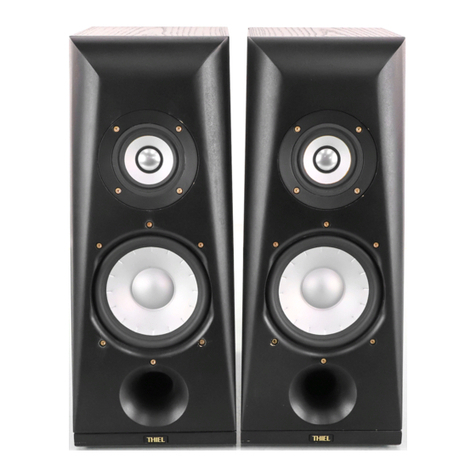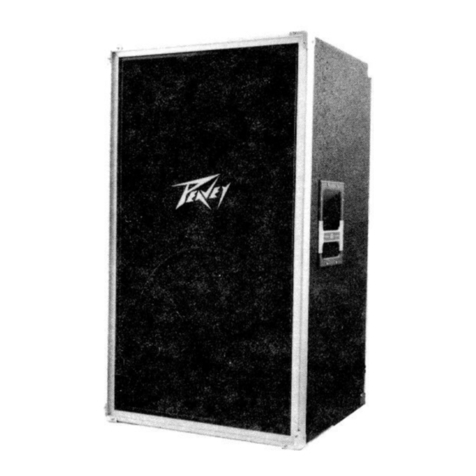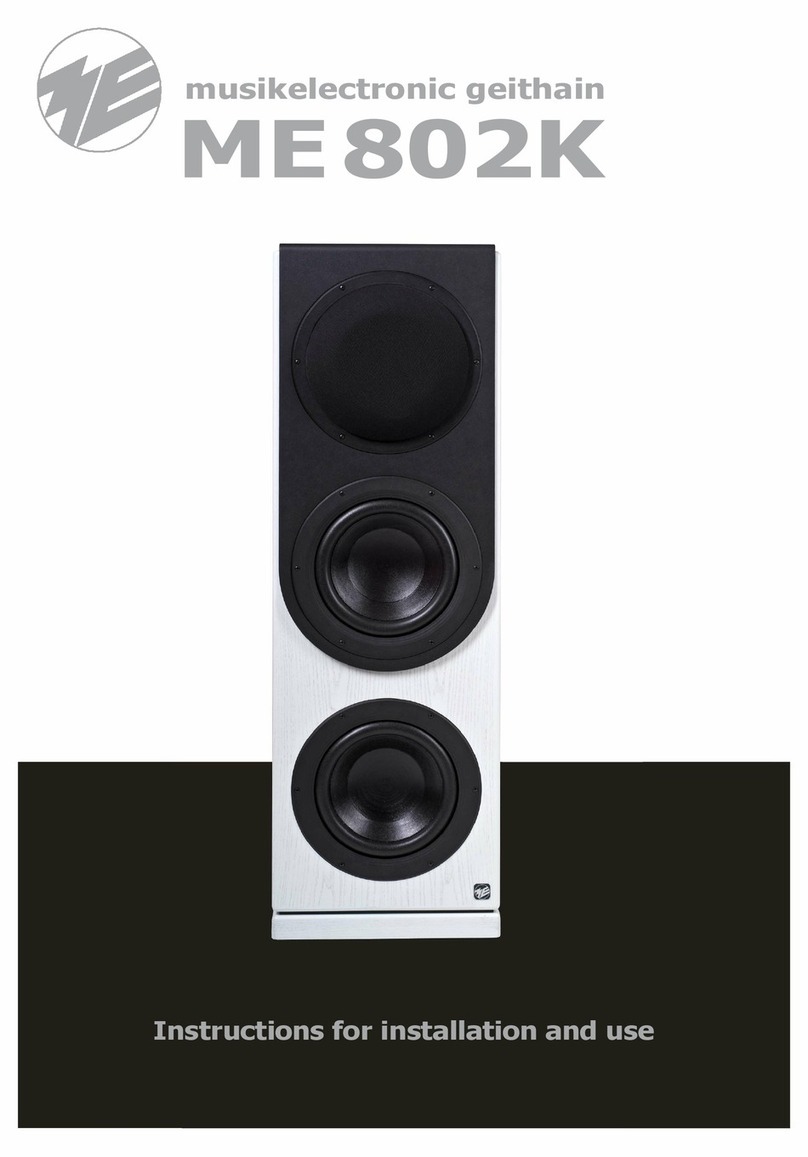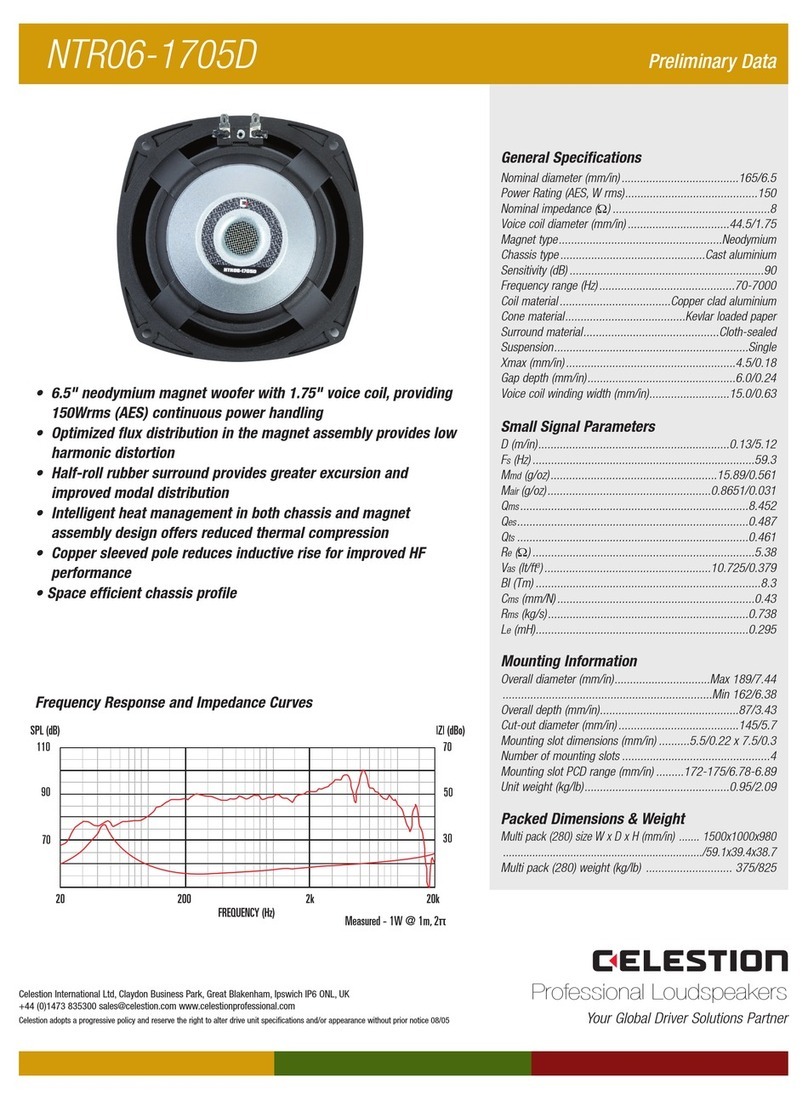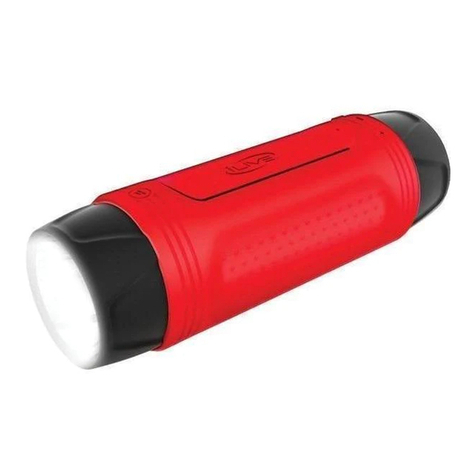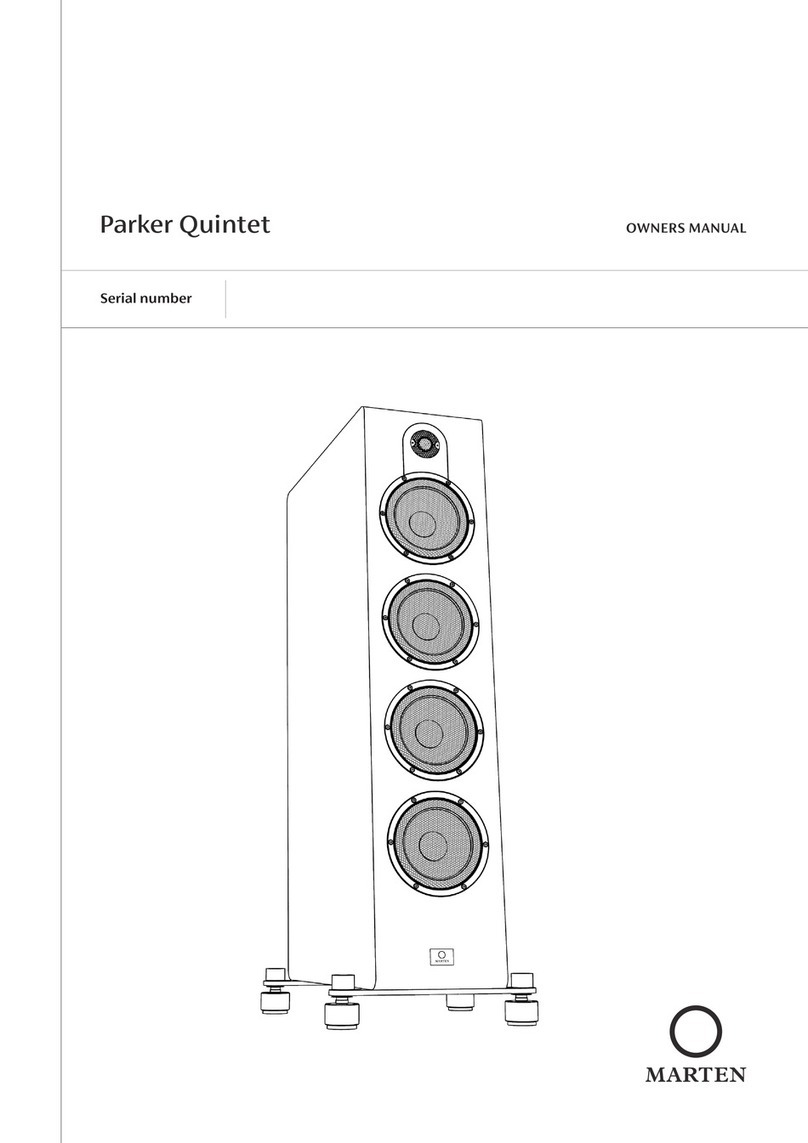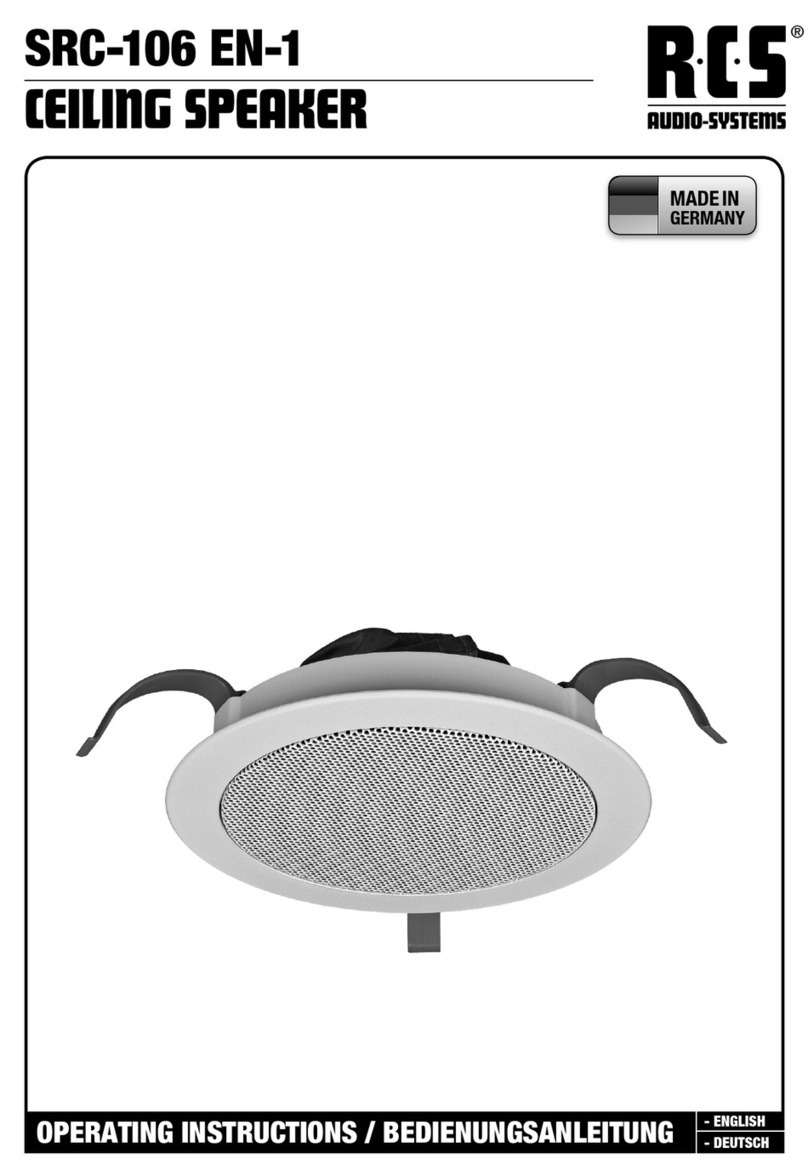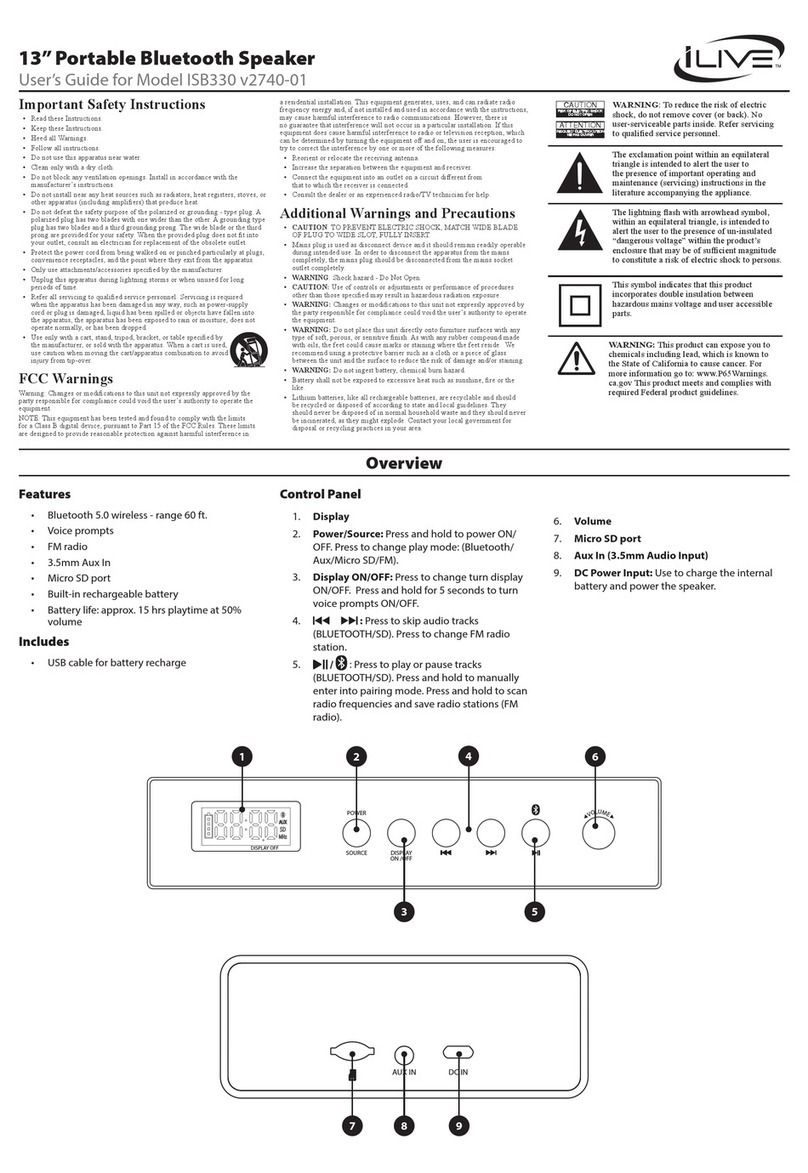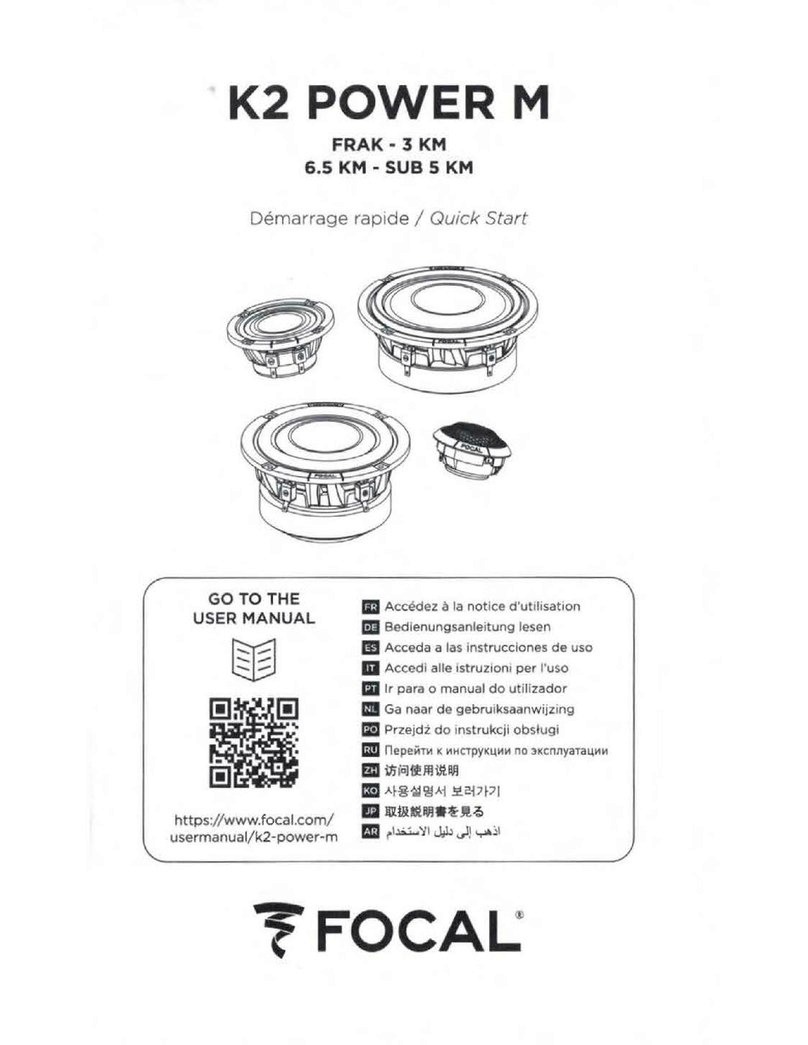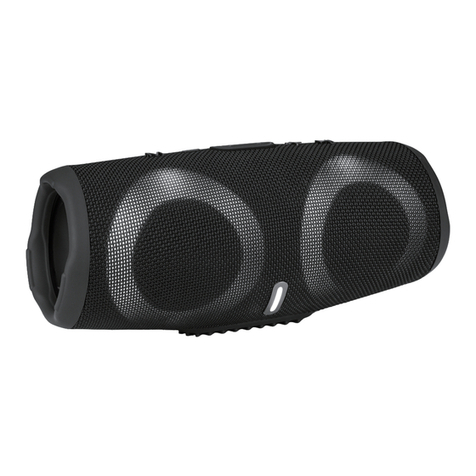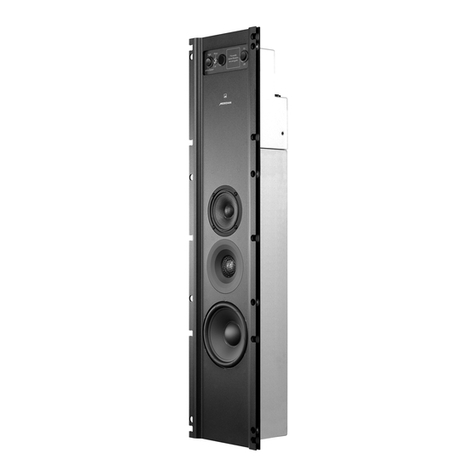Thiel CS1.5 Manual

THIEL • 1026 Nandino Boulevard • Lexington, Kentucky 40511 • USA
Web: www.thielaudio.com 5/00
Technical Information
THIEL CS1.5
Coherent Source
®
Loudspeaker
This paper describes some of the technical performance aspects, design
considerations and features of the THIEL model CS1.5 loudspeaker system.
It is intended to supply information for those who are interested in such
matters. It is not intended to imply that good measured technical
performance is sufficient to guarantee good sonic performance.

THIEL DESIGN PHILOSOPHY
All THIEL speakers are designed to be precision instruments that very accurately translate electronic information into musical sound.
All our efforts have been directed toward achieving extremely faithful translation of all tonal, spatial and dynamic information supplied by
the amplifier. They are not intended to mask or mitigate shortcomings of the recording or other components in the music playback system.
We believe this approach is the only way to provide the potential of experiencing all the subtle aspects that help make reproduced music a
most enjoyable human experience.
Performance goals
Since quality of musical performance is a very complex issue it is helpful to objectively identify the aspects involved. We believe
musical performance can be described, with not much oversimplification, as performance in four areas.
Tonal fidelity includes overall octave-to-octave balance, the fidelity of timbres, absence of vowel-like colorations, and bass extension.
Spatial fidelity includes how wide and deep the performing space seems, how convincingly instruments are placed from the center to
laterally beyond the speakers, how realistic the depth perspective is, how little the speakers’ positions seem to be the source of the sound,
and how large the listening area is.
Transient fidelity includes how clearly musically subtle low–level information is reproduced and how convincingly realistic is the
reproduction of the initial or ‘attack’ portions of sounds.
Dynamic fidelity includes how well the speaker maintains the contrasts between loud and soft and how unstrained and effortless is the
reproduction of loud passages.
Fundamental design considerations
In our opinion, natural spatial reproduction requires creating a realistic sound field within the listening room by mimicking the properties
of natural sound sources. These properties include wide area radiation and the absence of out-of-phase energy. To meet these requirements
all THIEL speakers employ dynamic drivers. Dynamic drivers have the advantages of providing a point source radiation pattern with good
dispersion of sound over a wide area, great dynamic capability, good bass capability and a lack of rearward out-of-phase energy. Another
advantage of dynamic drivers is that their small size allows the multiple drivers to be arranged in one vertical line. This alignment avoids the
problem of line source designs which must place their different drivers side-by-side, causing the distances from each driver to the listener to
change with different listener positions.
The major potential disadvantages of dynamic speakers are diaphragm resonances (“cone break-up”), cabinet resonances and cabinet
diffraction. Also, they share with other types of speakers the potential problems of time and phase errors introduced by multiple drivers and
their crossovers. None of these problems is a fundamental limit and all can be minimized or eliminated by thorough and innovative
engineering, allowing the possibility of a speaker system without significant fundamental limitations.
Technical requirements
The task of engineering a speaker system requires the translation of the musical performance goals into technical goals. Although there
are also many minor design considerations, the following are what we believe to be the major technical requirements that contribute to each
of the musical goals.
Tonal fidelity:
• Accurate frequency response so as to not over or under emphasize any portion of the sound spectrum
• Absence of resonances in the drivers or cabinet so as not to introduce tonal colorations
Spatial fidelity:
• Point-source, uni-polar radiation
• Time response accuracy to preserve natural spatial cues
• Lack of cabinet diffraction
Transient fidelity:
• Phase coherence to provide realistic reproduction of attack transients
• Very low energy storage to provide clarity of musical detail
Dynamic fidelity:
• High output capability
• Low distortion
Design goals
The technical requirements result in the following major technical design goals:
1. Very uniform frequency response
2. Time response accuracy
3. Phase response accuracy
4. Low energy storage
5. Low distortion
1

TWO-WAY SPEAKER SYSTEMS
Two-way speaker systems have a major inherent limitation due to the fact that one driver is used to reproduce both the bass and the
midrange part of the spectrum. If this driver is made small enough to have upper midrange reproduction free from resonances, colorations
and narrow dispersion, it suffers from inadequate size to move the volume of air needed for good deep bass reproduction. Conversely, if the
driver is made large enough to reproduce bass well, it suffers from poor midrange performance.
There are examples of both of these either/or approaches: two-way systems that provide, by the use of a small driver (5" or less), very
good upper midrange performance but poor bass performance and two-way systems that provide, by the use of a large driver (8" or more),
good bass performance but poor upper-mid performance. However, most high-quality two-way systems (including THIEL's) use a balanced
approach of using an intermediate size driver. These systems can often provide good, but not outstanding, performance in both the bass and
upper midrange areas.
The design goals of the CS1.5 included, in addition to the above mentioned goals, significant reduction of the inherent two-way
limitations. In other words, we wanted to achieve significantly improved bass performance simultaneously with markedly better upper
midrange reproduction. Achieving these goals required the development of a new low frequency driver with improved bass and upper
midrange performance, two characteristics that tend to be mutually exclusive. The concept developed for the new woofer was to utilize a
very unusual short coil/long gap motor system in conjunction with an aluminum diaphragm.
FREQUENCY RESPONSE
Since frequency response errors are a measure of tonal imbalances which alter music’s tonal characteristics we believe that accurate
frequency response is an absolute requirement for a truly good speaker. Our design goal was to achieve accuracy in the design prototype of
±2 dB with a production tolerance of ±1 dB. The result is a tolerance in every production speaker of ±3 dB and a tolerance from speaker to
speaker of ±2 dB at all frequencies.
In our opinion the human ear is sensitive enough to the balance between component harmonics of musical sounds to detect frequency
balance errors of as little as 0.2 dB if they are over a range of an octave or more. Therefore, even more important than the maximum
amount of response error at any frequency is the octave averaged, octave-to-octave balance which has a very high correlation with
perceived tonal balance. Our design goal was to achieve octave-averaged response within ±1 dB from 60 Hz to 10 KHz. Any deviation
more than 1 dB is confined to only a narrow frequency range and therefore will have less effect on the perceived balance.
Achieving these goals requires the use of drivers with very uniform responses, drivers with high consistency (so that few units need be
rejected), reduction of usual cabinet diffraction which causes response errors, and an unusual degree of compensation of driver response
anomalies in the electrical network.
Driver response
The major cause of non-uniform driver response is diaphragm resonances. These
resonances are also the major energy storage mechanism.
In the case of the CS1.5 tweeter, a metal diaphragm is used that is stiff and light
enough so the lowest diaphragm resonance occurs above the range of hearing at 26
KHz. Therefore, there are no resonances in the audible range to cause energy storage
or response irregularities.
The CS1.5’s woofer also employs a metal diaphragm rather than the usual plastic
or paper. The aluminum material provides much higher stiffness and compressive
strength than conventional diaphragm materials. The primary benefit provided is that
the lowest resonance is at 7 KHz, more than an octave above the crossover frequency.
Below 7 KHz there are no resonances to store energy and cause ringing. An additional
benefit is that the aluminum’s much higher compressive strength results in almost all
the energy of a transient attack being transferred to sonic output rather than being
absorbed in compression of the diaphragm material.
Even though the diaphragm resonance at 7 KHz is more than an octave above the
crossover, its ringing would cause a sonic effect if not corrected. We have therefore
incorporated into the electrical network a notch filter which complements and cancels
the resonance. Figure 1 shows the decay spectra of the woofer. The peak with its
consequent ringing at 7 KHz can be clearly identified. Figure 2 shows the decay
spectra with resonance compensation. Although some trace of the resonance is still
discernible, it has been reduced to a minor level.
A contributing factor in achieving the very high diaphragm resonance of 7 KHz is
the very short voice coil. Usual long coils result in a relatively heavy moving system
which, while not a limitation for woofer-only applications, is a problem in a driver
required to have good upper midrange performance. The longer (and therefore heavier)
the coil is made to improve excursion and bass output ability, the more difficult it is to
achieve good upper-mid performance since the heavier coil excites more strongly, and lowers the frequency of, the moving system
(diaphragm) resonances. Utilizing a short, and therefore light, coil allows the CS1.5’s woofer to achieve a wider bandwidth and therefore
higher quality mid-frequency performance.
2
Figure 1 Time response of woofer without compensation
Figure 2 Time response of woofer with compensation

3
Diffraction
Diffraction causes frequency response and time response errors and therefore a reduction in tonal, spatial, and transient fidelity.
Diffraction occurs when some of the energy radiated by the drivers is re-radiated from the cabinet edges at a later time. For musical signals
that remain constant for a few milli-seconds, diffraction causes, by constructive and destructive interference, an excess of energy to the
listener at some frequencies and a deficient amount of energy to the listener at other frequencies. Diffraction also causes all transient
signals to be radiated to the listener a second (and possibly a third) time, smearing transient impact and distorting spatial cues.
To reduce diffraction the CS1.5 employs a grille board that fits around (rather than on) the
baffle and one that is curved at the edges so energy radiated along the baffle can continue into
the room without encountering abrupt cabinet edges.
Results
The end result of reducing diffraction
and diaphragm resonances is a speaker
with very accurate tonal characteristics.
Figure 3 shows the on-axis frequency
response of the CS1.5. It is uniform
within ±3 dB from 43 Hz to 22 KHz.
Subjectively even more important is the
octave-averaged frequency response.
Figure 4 shows this response to be
within ±1 dB from 60 Hz to 10 KHz
indicating extremely accurate overall
tonal balance. Furthermore, as a result of
gradual crossover slopes, the off-axis
frequency response of the speaker system
is also smooth and well balanced. This
unusual performance is important for
producing a uniform amount of ambient
energy at all frequencies, necessary for
natural spatial reproduction. Figure 5
shows this octave-averaged, 30°off-axis
response to be within ±1.5 dB from 45
Hz to 15 KHz, showing very uniform
dispersion of energy at all frequencies.
TIME RESPONSE
In most loudspeakers the sound from each driver reaches the listener at different times causing the loss of much spatial information.
One problem caused by different arrival times from each driver is that the only dependable locational clue is the relative loudness of each
speaker which causes the sound stage to exist only between the speakers. In contrast to this loudness type of imaging information, the ear–
brain interprets real life sounds by using timing information to locate the position of a sound.
The ear perceives a natural sound as coming from the left mainly because the left ear hears it
first. That it may also sound louder to the left ear is of secondary importance.
Another problem is that for realistic reproduction, it is important that the attack, or start, of
every sound be clearly focused in time. Because more than one driver is involved in the
reproduction of the several harmonics of any single sound, the drivers must be heard in unison
to preserve the structure of the sound. Since, in most speakers, the tweeter is closer to the
listener’s ear, the initial attack of the upper harmonics arrives a millisecond or so before the
body of the sound. This delay results in a noticeable reduction in the realism of the reproduced
sound.
To eliminate both these problems the CS1.5 drivers are mounted on a sloped baffle to
position them so the sound from each reaches the listener at the same time. This arrangement
can work perfectly for only one listening position. However, because the drivers are positioned
in a vertical line the error introduced by a listener to the side of the speaker is very small. Also,
the error introduced by changes in
listener height are small within the
range of normal seated listening
heights provided the listener is 8 feet
or more from the speakers.
Figure 6 shows the group delay,
the measure of time error, of the CS1.5
from 200 Hz to 20 KHz. For all
frequencies above 400 Hz the delay is
less than 0.5 ms.
Cabinet-edge diffraction
tweeter
10K
Frequency
1K
25
20
15
10
5
0
-5
-10
10020 20K
Amplitude — dB
Figure 3 On-axis frequency response
10K
Frequency
1K
25
20
15
10
5
0
-5
-10
10020 20K
Amplitude — dB
Figure 4 On-axis Octave averaged frequency response
10K
Frequency
1K
25
20
15
10
5
0
-5
-10
10020 20K
Amplitude — dB
Figure 5 30°off axis Octave averaged frequency response
Time correction
Figure 6 Time response
10
Frequency - KHz
1
2.5
2.0
1.5
1.0
0.5
0.0
-0.5
-1.0
-1.5
-2.0
-2.5
Transfer Function Group Delay - msecs

PHASE RESPONSE
We use the trade mark Coherent Source to describe the unusual technical performance of our products. This phrase is descriptive of the
time and phase coherence which gives THIEL products the unusual ability to accurately reproduce musical waveforms.
Usually, phase shifts are introduced by the crossover slopes, which change the musical waveform and result in the loss of spatial and
transient information. The fourth order Linkwitz-Riley crossover is sometimes promoted as being phase coherent. What is actually meant is
that the two drivers are in phase with each other through the crossover region. However, neither driver is in phase with the input signal nor
with the drivers’ output at other frequencies; there is a complete 360°phase rotation at each crossover point.
There is a type of crossover system that does not introduce any phase shift or time smear, although it is difficult and expensive to
execute. This crossover is the first order (6dB/octave) system that THIEL has employed since 1978 in all Coherent Source systems. A first
order system is the only type that can achieve perfect phase coherence, no time smear, uniform frequency response, and uniform power
response.
A first order system achieves its perfect results by keeping the phase shift of each roll-off to less than 90°so that it can be canceled by
the roll-off of the other driver that has an identical phase shift in the opposite direction. (Phase shifts greater than 90°cannot be canceled.)
The phase shift is kept low by using very gradual (6dB/octave) roll-off slopes which produce a phase lag of 45°for the low frequency
driver and a phase lead of 45°for the high frequency driver at the crossover point. Because the phase shift of each driver is much less than
90°and is equal and opposite, their outputs combine to produce a system output with no phase shift and perfect transient response.
Figure 7 graphically demonstrates how the outputs of each driver in a two-way speaker
system combine to produce the system’s output to a step input. The first graph shows the ideal
output. The second shows the operation of a time-corrected, fourth order crossover system.
The two drivers produce their output in the same polarity and both drivers start responding at
the same time. However, since the high-slope network produces a large amount of phase shift,
the tweeter’s output falls quickly and the woofer’s output increases only gradually. Therefore,
the two outputs do not combine to produce the input step signal well but instead greatly alter
the waveform. The third graph shows how, in a first order crossover system, the outputs of the
two drivers combine to reproduce the input waveform without alteration.
In practice the proper execution of a first order system requires very high quality, wide
bandwidth drivers and that the impedance and response variations of the drivers and the
cabinet be compensated across a wide range of frequencies. This task is complex since what is
necessary is that the acoustic outputs of the drivers roll off at 6 dB/octave and not simply for
the networks themselves to roll off at 6 dB/octave. For example, if a typical tweeter with a low
frequency roll-off of 12 dB/octave is combined
with a 6 dB/octave network, the resulting
acoustical output will roll off at 18 dB/octave.
Therefore in practice the required network
circuits are much more complex than might be
thought.
Figure 8 is a plot of the absolute phase
response of the CS1.5. It shows that the phase
response is within a very accurate ±20°from 400
Hz to 17 KHz. Even more important is the
speakers’s phase deviation from the mathematical
“minimum” phase response of an ideal transducer
with the same frequency response. This deviation
is called the excess phase and is plotted for the CS1.5 in Figure 9. This graph shows the
excess phase to be less than ±5°to beyond 10 KHz.
The result of phase coherence (in conjunction with time coherence) is that all waveforms
will be reproduced without major alterations. The speaker’s reproduction of a step waveform
best demonstrates this fact. Like musical waveforms, a step is made up of many frequencies
which have precise amplitude and phase relationships. For a step signal to be accurately
reproduced, phase, time and amplitude response must all be accurate. Because this waveform
is so valuable, it is commonly used to evaluate the performance of electronic components. It is
not typically used for speaker evaluation because most speakers are not able to reproduce it
recognizably. Figure 10 shows the CS1.5’s response to a step. That the step is reproduced so
recognizably is the result of accurate phase, time and amplitude response.
4
Time
Output
-
+
Ideal step response
Time corrected fourth order crossover system
First order crossover system
tweeter output
woofer output
combined output
Figure 7
Figure 9 CS1.5 excess phase
Figure 10 CS1.5 step response
Time – msec
0.5 1.0
Output
1.5 2.0 2.5
10
Frequency - KHz
1
100
80
60
40
20
0
-20
-40
-60
-80
-100
Transfer Function Phase - deg
Figure 8 CS1.5 phase response
Frequency - KHz
100
80
60
40
20
0
-20
-40
-60
-80
-100
Transfer Function Excess Phase - deg
101
0.1

ENERGY STORAGE
Any part of the speaker that absorbs energy will re-radiate it later in time in a highly distorted manner. Although not loud enough to be
consciously heard, stored energy causes significant detrimental effects. The music’s subtle detail is obscured, causing both a reduction in
clarity and loss of spatiality as well as noticeable colorations of voice and other midrange sounds. The main storage mechanisms are the
driver diaphragms and cabinet walls, especially the baffle. The lack of cabinet wall vibrations is one advantage of membrane speakers and
why they have an “unboxy” sound. However the problem of cabinet vibrations in dynamic loudspeakers is not inherent but rather can be
reduced as much as is affordable.
One method of attempting to reduce the problem of stored energy is to apply damping to the offending component. The idea is to damp
motion with a viscous material so that the stored energy can be dissipated as heat instead of mechanical vibration which produces unwanted
sound. This method has limited benefit for two reasons. First, energy can only be dissipated as heat if there already exists unwanted
mechanical vibration to convert. Secondly, even though some of the absorbed energy is transformed into heat, it is still absorbed from the
desired sonic output and therefore the distortion mechanism still exists. A much better approach, in our opinion, is to reduce the energy
absorbed.
The primary cabinet problem is baffle vibration because movement of the drivers can directly excite the baffle and the resulting
extraneous energy is radiated directly toward the listener. The CS1.5 employs a 2" thick baffle in the driver area to reduce unwanted
vibration. Also, the walls of the CS1.5 enclosure are constructed of 1" thick fiberboard, and extensive internal bracing further increases
wall stiffness.
To increase the mechanical rigidity and therefore reduce unwanted vibration, the CS1.5 woofer incorporates a chassis of cast
magnesium rather than stamped steel or plastic.
As previously discussed, much attention has been given to the reduction of diaphragm vibrations to reduce the amount of energy
absorbed through resonances.
Figure 11 is the Energy-Time curve of the CS1.5. It shows how the speaker’s output
energy to a pulse input is distributed in time. First, it shows that most of the energy is focused
in the first 150 microseconds, a result of very good time coherence. It also shows that the
speaker’s output has already decayed to -20 dB after only 400 microseconds and has fallen to
-40 dB after only 1.2 milliseconds. This rapid decay provides very clean reproduction with
very good inter-transient silence.
DISTORTION
The primary sources of distortion are the drivers’ magnetic motor systems and the electrical components of the crossover network. We
have taken unusual steps in the design of the CS1.5 to greatly reduce distortion contributed by these sources.
Crossover components
The usual type of capacitor for speakers is electrolytic. This type has the advantage of very low cost but also causes audible distortion
due to dielectric absorption and other mechanisms. There are only two electrolytics used in the CS1.5 and neither of these is in the signal
path. Both are used in zobel networks to correct the drivers’ impedance and are bypassed with high quality polypropylene types to provide
performance closer to the polypropylene type than the electrolytic. The capacitor which is most important sonically is the tweeter feed
capacitor. In this case we bypass the polypropylene unit with a very high quality custom–made polystyrene and tin foil unit. All other
capacitors are polypropylene.
All the CS1.5 inductors are air-core, which are completely free of distortion caused by magnetic saturation and hysteresis and are
wound of high purity, low oxygen copper. Also, the speaker’s internal wiring uses custom–made, solid conductor, high purity copper with
teflon insulation.
Woofer motor system
Unlike other sources of distortion, motor system distortion is very dependent on volume level, being low during quiet playback levels
but increasing rapidly as volume levels increase. At moderate to loud playback levels it is the major source of distortion and can therefore
be considered a dynamic range limit. The CS1.5 incorporates several unusual features in its woofer to decrease distortion and increase
dynamic range.
The purpose of the driver’s motor system is to apply a force to the diaphragm that is directly proportional to the voltage supplied by the
amplifier as modified by the electrical network. In order for the force to be directly proportional to the voltage applied, as desired, the
magnetic field must be constant, the length of voice coil wire acted on by the magnetic field must be constant, and the current in the voice
coil must be directly proportional to the applied voltage. In practice, none of these three conditions actually exist but the CS1.5 woofer
incorporates refinements of design that greatly improve the accuracy of each of these factors.
The first distortion mechanism is that the strength of the magnet’s field is not actually constant in operation but is changed by the
current from the amplifier through the coil. This change occurs because the amplifier current through the coil generates the force to move
the diaphragm by creating its own magnetic field that “pushes” against the magnet’s field. The magnet is somewhat demagnetized by the
coil’s magnetic field when current flows in one direction and is remagnetized when current flows in the opposite direction. Therefore, since
the magnet’s field strength is not constant, the force generated is not in the desired direct proportion to the current in the coil. To greatly
reduce this effect the CS1.5 woofer incorporates a copper sleeve around the center pole. With this sleeve any changes in the magnet’s
strength induces an electrical current in the sleeve which generates a magnetic field that is opposed to and practically cancels the original
change.
5
Time – msec
0.5
5
0
-5
-10
-15
-20
-25
-30
-35
1.0
Output — dB
1.5 2.0 2.5
Figure 11

coil
1234
peak excursion ±mm
8%
6%
4%
2%
distortion
1234
peak excursion ±mm
8%
6%
4%
2%
distortion
The second distortion mechanism results from the fact that almost
all woofers use a long coil/short gap motor system where the long coil
is acted upon by the “fringe” field in front of and behind the gap
region. As the coil moves forward or backward to produce bass
energy, the magnetic field acting on the coil becomes less intense
because the coil is further from its rest position where the magnetic
field is strongest. This weakening of field strength as the coil moves
away from its rest position is the primary distortion producing
mechanism in woofers.
In the CS1.5’s short coil/long gap system the coil is much shorter
than the magnetic gap and therefore, even when the coil moves a
considerable distance from its rest position, it continues to be acted
upon by an unchanging magnetic field and does not experience the
changes in magnetic field strength with position as in the conventional
system. As shown in Figure 12, the distortion produced by the short
coil motor system at normal excursion levels (±3 mm or less) is only
one-tenth that produced by the typical long coil system.
The third distortion mechanism is that the coil current is dependent
not only on the driving voltage and the coil resistance but also on the
coil inductance. The problem is that the coil inductance varies with the
amount of iron inside the coil and, therefore, with conventional magnet
system geometry, inductance changes during the excursions necessary
to reproduce low frequencies. As the diaphragm and coil move back,
more of the coil is around the pole, increasing the inductance and
decreasing the mid-frequency output of the driver by about 1 dB. As
the coil moves forward, less of the coil is around the pole, the
inductance decreases and the mid-frequency response increases
approximately 1 dB. By this mechanism the frequency response of the
speaker is modulated by driver excursion. This problem has been
virtually eliminated in the CS1.5 woofer. The short coil design results
in the entire coil surrounding the pole in all positions and therefore the
coil’s inductance does not change with the diaphragm position. In
addition, the problem is further reduced by the copper sleeve which
reduces the inductance of the coil to a fraction of its normal value by
acting as a shorted turn of a transformer secondary winding.
Short coil advantages
In summary, the short coil/long gap magnet system used in the CS1.5 provides several important advantages. First, it provides
extremely low distortion, both harmonic and intermodulation. This is especially important in two-way systems where intermodulation of
the upper midrange by the bass is possible. Secondly, it allows the excursion (and therefore bass capability) to be increased without
increasing coil length but by only increasing magnet size. Thirdly, it allows the coil to be kept very light for improved upper midrange
performance. The disadvantage of this approach is that more magnet weight is required which increases costs.
Stray magnetic field
For applications where the speaker is used very near a TV it is
necessary that there be a low level of stray magnetic field to avoid
distorting the picture. This is achieved in the CS1.5 woofer by
configuring the required magnet weight into two magnets, polarized
in opposite directions, one magnet placed on the rear of the driver and
the other occupying its normal position. The rear magnet cancels
most of the field that would exist outside the speaker but also
continues to contribute to the strength of the field acting on the coil
by forcing magnetic energy into the gap that would otherwise escape.
Therefore, the total magnet weight of the two magnets is no greater
than a single magnet required to achieve the same gap field strength
and stray field reduction is achieved without significant additional
cost.
All of these design details contribute to the CS1.5’s exceptional
technical performance, its accurate reproduction of musical
information, and its ability to faithfully reproduce the musical
experience.
6
Magnesium frame for rigidity
and clearer reproduction
Short coil / long gap
motor for very low
levels of distortion
Copper sleeve for low distortion
and exceptional attack
Phase plug for more
uniform response
Two magnets with a
total weight of 1.1 Kg
for exceptional bass
control and low stray
magnetic field
Aluminum diaphragm for rigidity
and transparent reproduction
CS1.5 Woofer
Figure 12
Table of contents
Other Thiel Speakers manuals
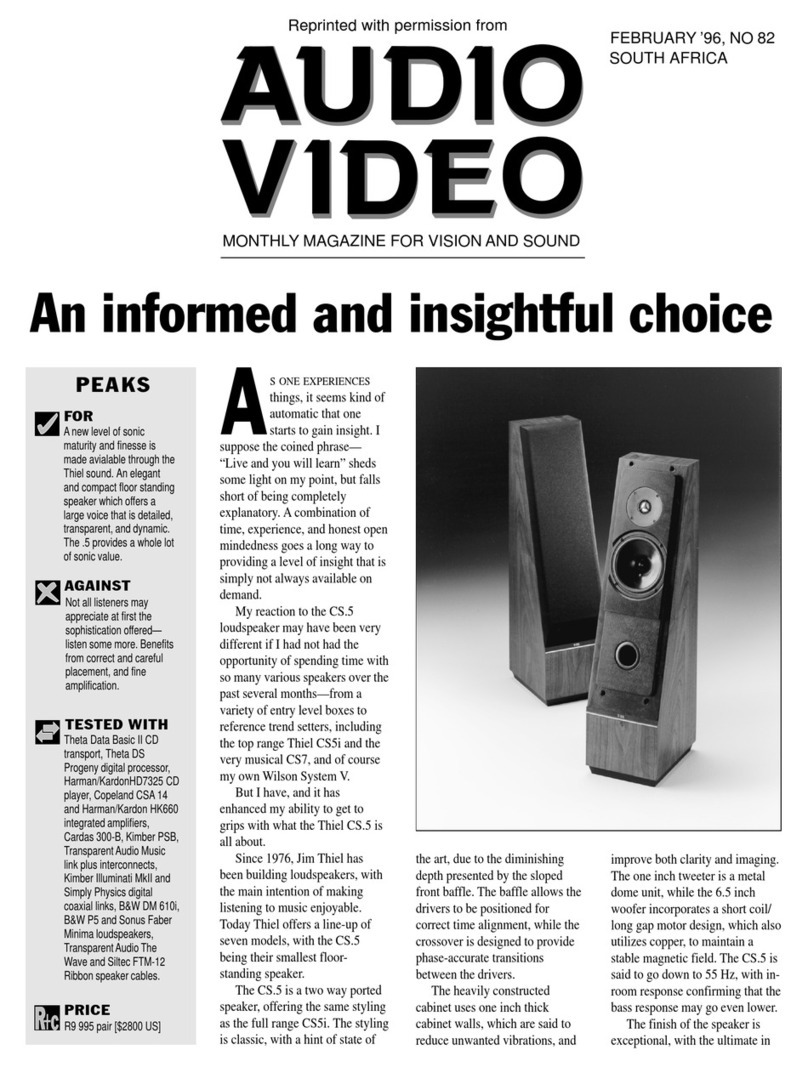
Thiel
Thiel CS.5 Dimensions
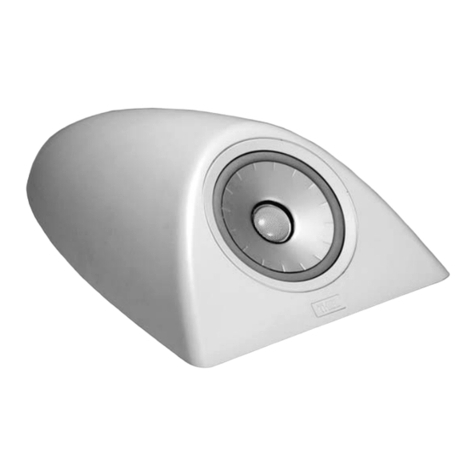
Thiel
Thiel PowerPoint 1.2 User manual
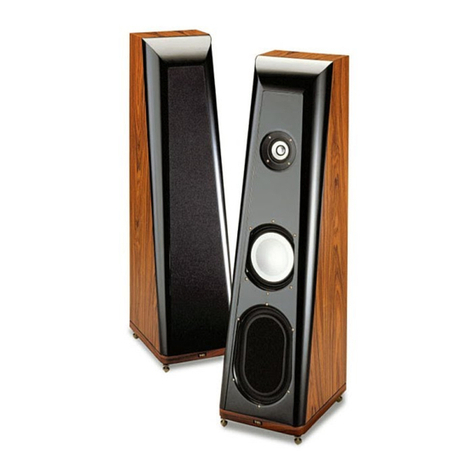
Thiel
Thiel CS2.4 User manual

Thiel
Thiel PowerPoint 1.2 User manual
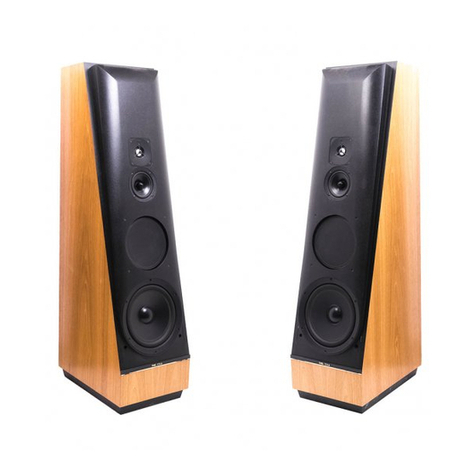
Thiel
Thiel CS3.6 User manual
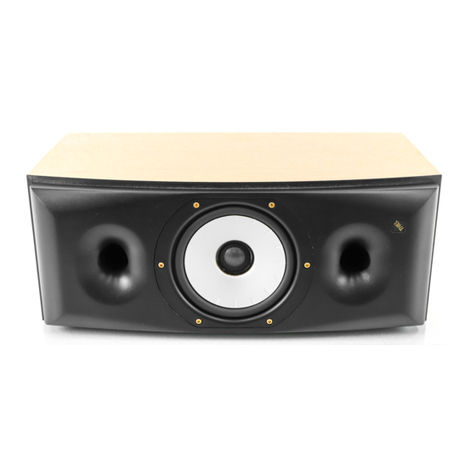
Thiel
Thiel Coherent Source SCS3 Manual
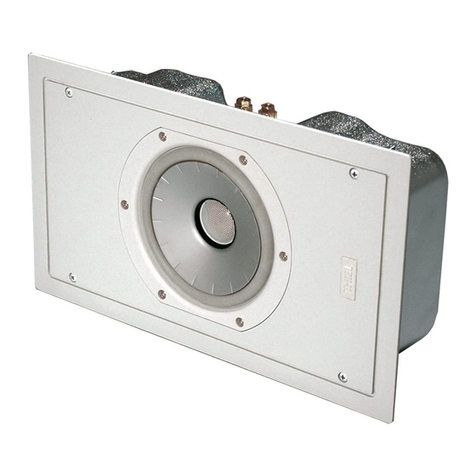
Thiel
Thiel PowerPlane 1.2 User manual
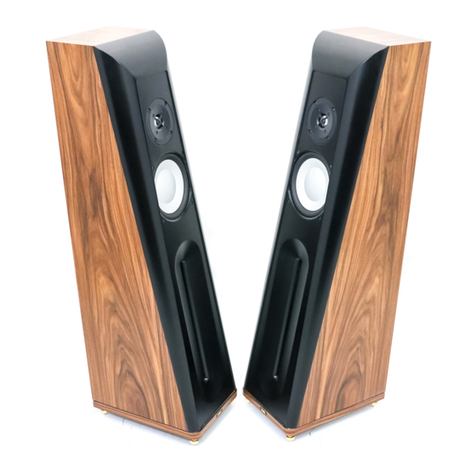
Thiel
Thiel CS1.6 Dimensions

Thiel
Thiel SCS4T Technical manual
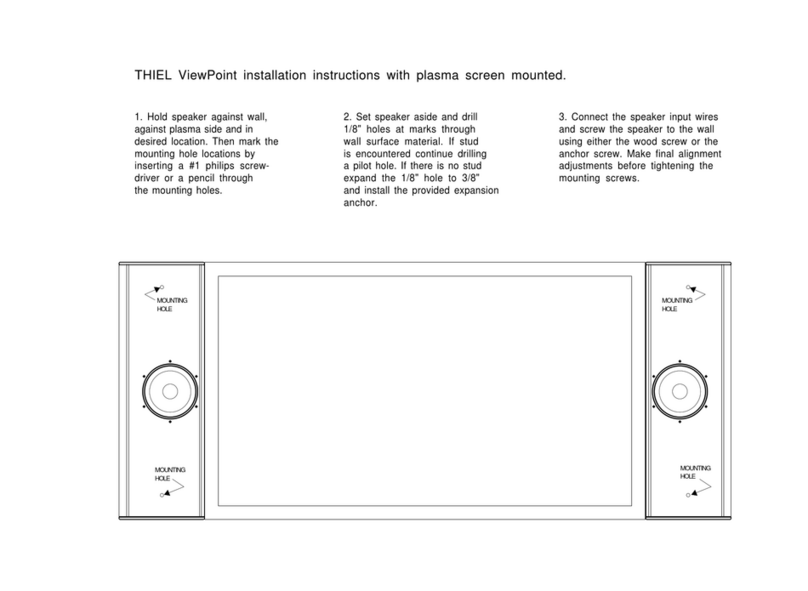
Thiel
Thiel ViewPoint User manual
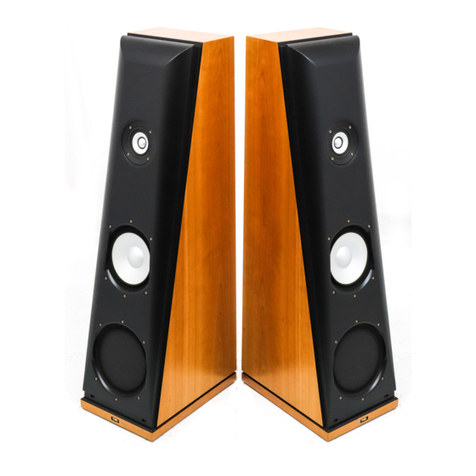
Thiel
Thiel CS2.3 Dimensions
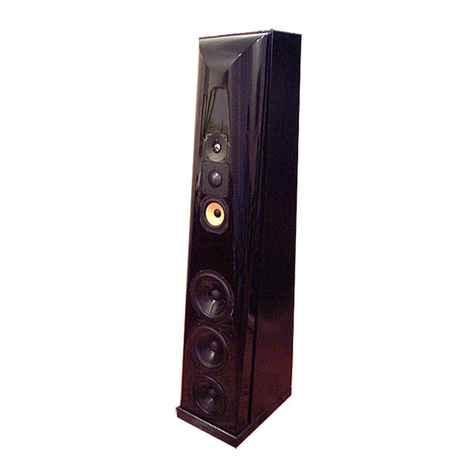
Thiel
Thiel Coherent Source CS.5 Manual
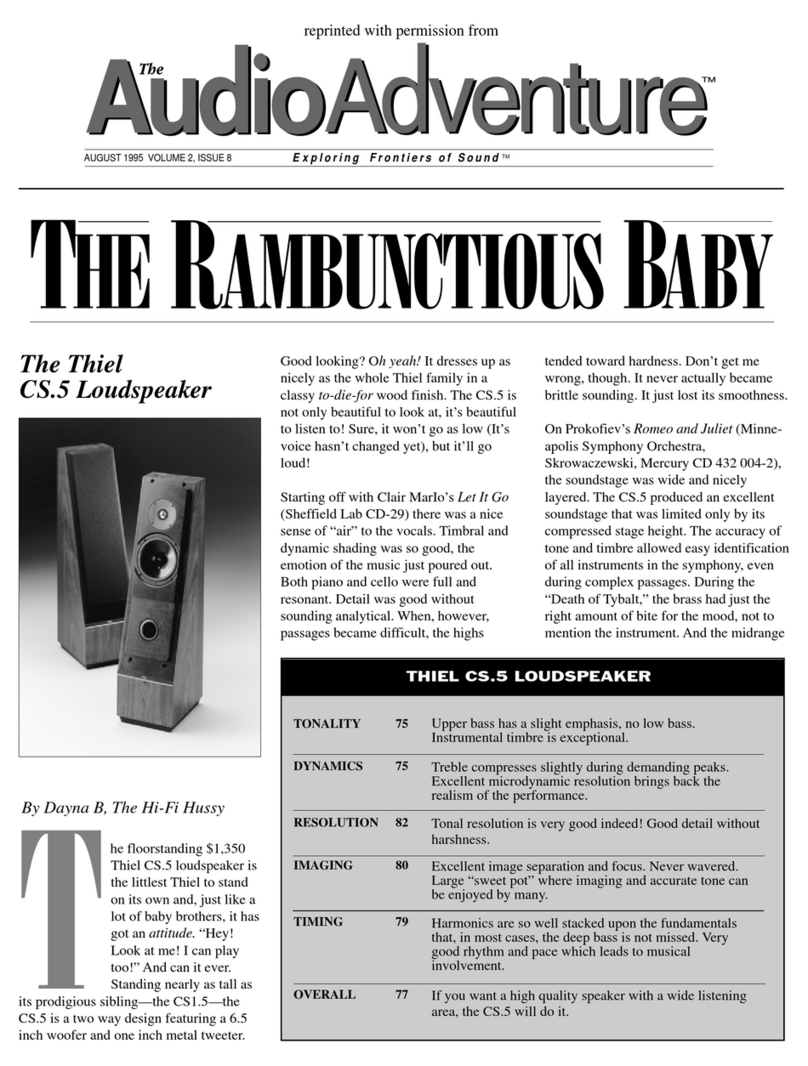
Thiel
Thiel CS.5 Dimensions
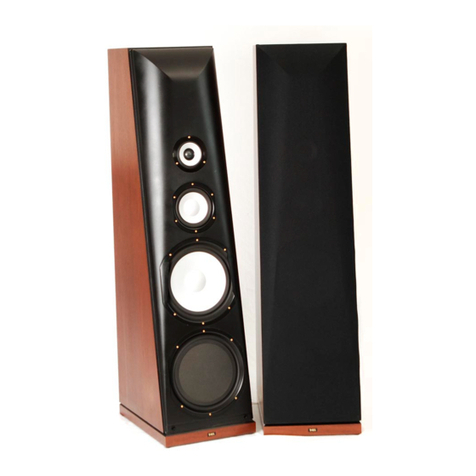
Thiel
Thiel CS6 User manual

Thiel
Thiel PowerPlane 1.2 User manual
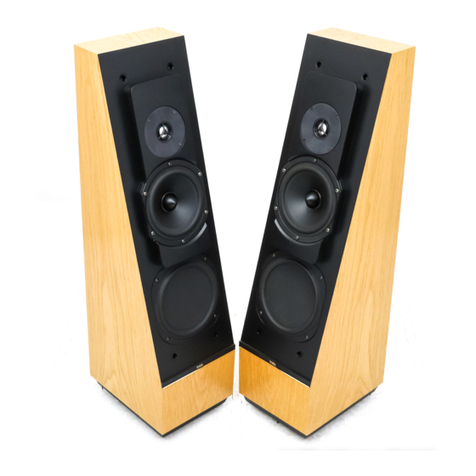
Thiel
Thiel CS1.5 User manual
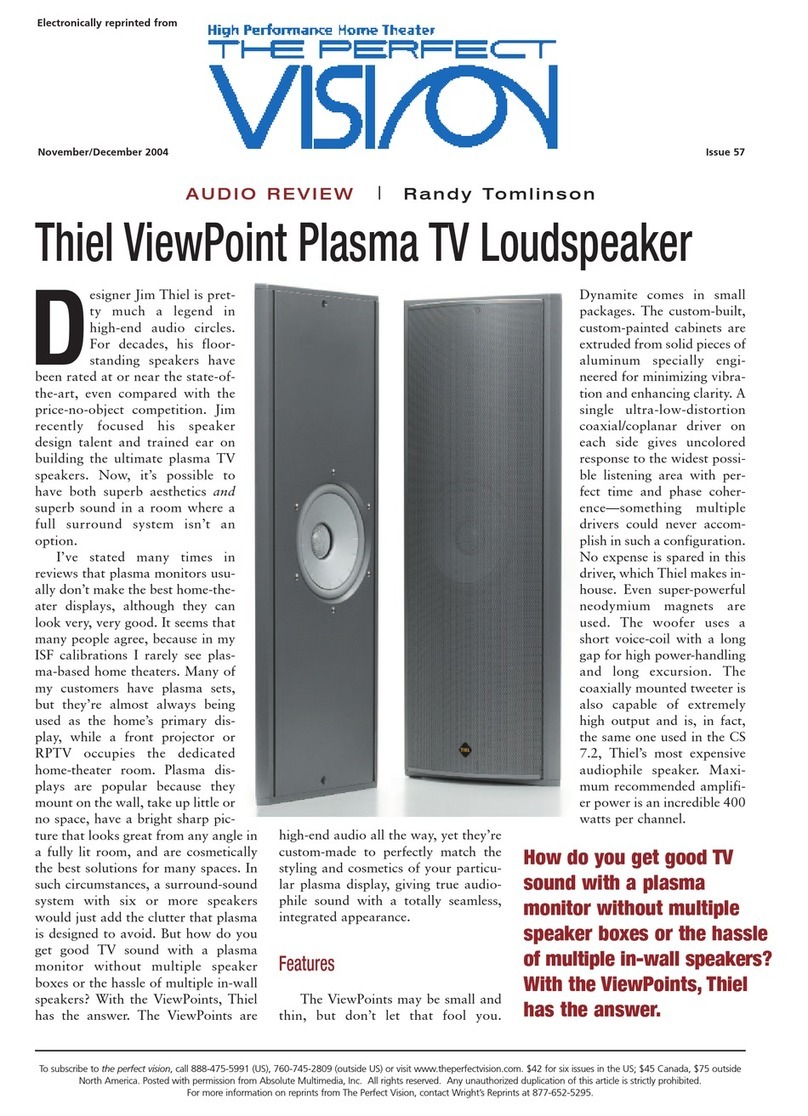
Thiel
Thiel ViewPoint Dimensions

Thiel
Thiel DewPoint Technical manual

Thiel
Thiel PowerPoint 1.2 Dimensions

Thiel
Thiel Coherent Source CS2.7 User manual

